Calycoseris parryi, Yellow Tackstem
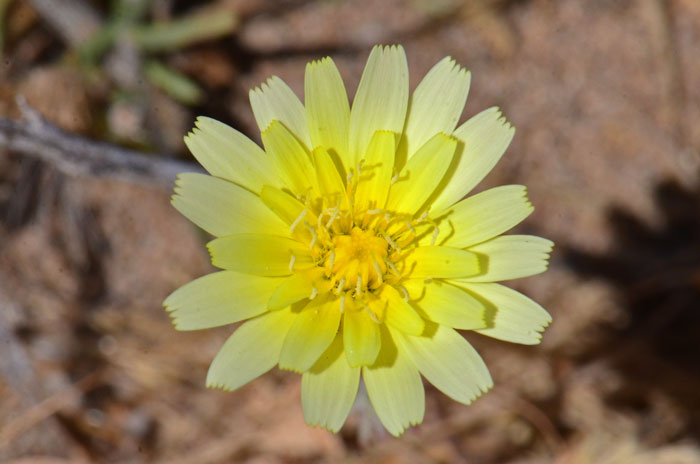
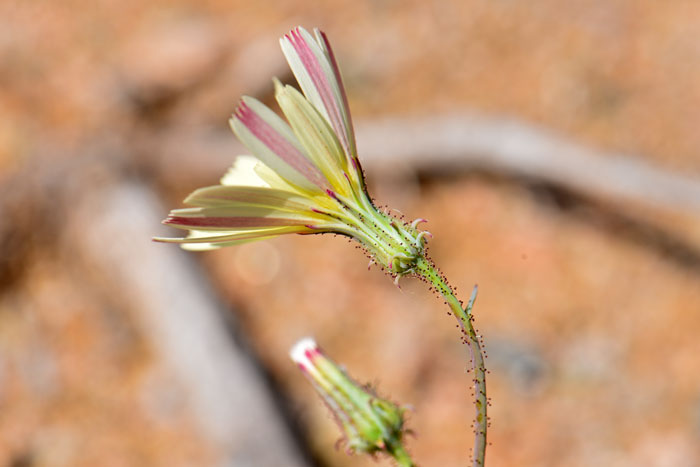
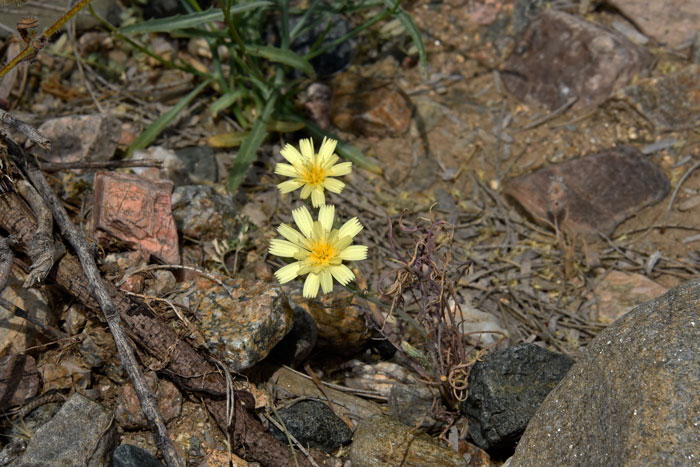
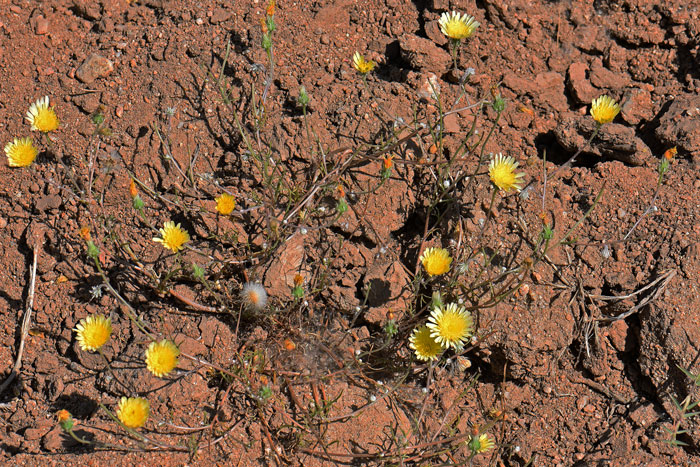
Scientific Name: Calycoseris parryi
Common Name: Yellow Tackstem
Also Called: Tackstem
Family: Asteraceae, Sunflower Family
Synonyms: ()
Status: Native
Duration: Annual; winter annual.
Size: Up to 12 inches (30 cm).
Growth Form: Forb/herb; low, branching with 1 or 3 stems from the base; plants glabrous and dotted with red or purple glands; milky sap.
Leaves: Green; leaves arranged alternately on the stems; leaves without supporting stalk or petiole (sessile), leaves are pinnately divided, leaves linear; small, almost inconspicuous.
Flower Color: Yellow, bright yellow; flowers strap-like or ligulate; bracts surrounding flower heads gland-dotted, red or purple tipped fruit a fusiform cypsela with a pappus of white stiff hairs (bristles.
Flowering Season: March to April; April, May, June in California and Texas.
Elevation: 650 feet (200 m) to 6,000 feet (1,800 m).
Habitat Preferences: Sandy, gravelly soils, sand dunes, washes, slopes and limestone ridges in lower Mojave and Colorado (western Sonoran) deserts.
Recorded Range: Yellow Tackstem is found in the southwest United States in AZ, CA, NV, UT. This species is also native to Baja California and northwestern Mexico. In Arizona in is found in the northwest part of the state and northwest Maricopa County.
North America & US County Distribution Map for Calycoseris parryi.
North America species range map for Calycoseris parryi:
North American range map courtesy of Virginia Tech, Dept. of Forest Resources & Environmental Conservation
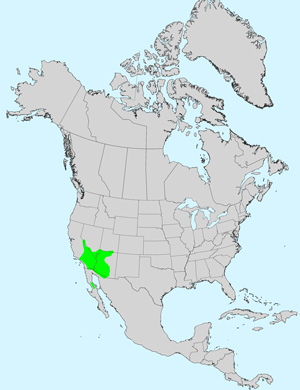
U.S. Weed Information: Unknown
Invasive/Noxious Weed Information: Unknown
Wetland Indicator: Unknown
Threatened/Endangered Information: Unknown
Genus Information: In North America there are 2 species and 2 accepted taxa overall for Calycoseris. World wide, The Plant List includes 2 accepted species names and includes a further 2 infraspecific rank for the genus.
The genus Calycoseris was published by Asa Gray in 1853.
In the Southwestern United States: Arizona, California, Nevada and Utah each have 2 species of Calycoseris, New Mexico and Texas each have 1 species. All data is approximate and subject to taxonomic changes.
Comments: Yellow Tackstem is a Spring wildflower preferring limestone soils and is primarily a Mojave Desert and western Sonoran Desert species.
Yellow Tackstem is similar in size and shape to the closely related White Tackstem, Calycoseris wrightii which differs primarily by its white flowers.
The genus Calycoseris was published by Asa Gray in 1853.
The specific epithet parryi (par'ryi/par'ryana:) is named in honor of Dr. Charles C. Parry, (1823-1890), an English-born American botanist and botanical collector with the Pacific Railway Survey who visited the Southwestern mountains and deserts many times and is remembered in the names of more than a score of southwestern native plants. Dr. Parry studied botany under John Torrey, Asa Gray and George Engelmann.

